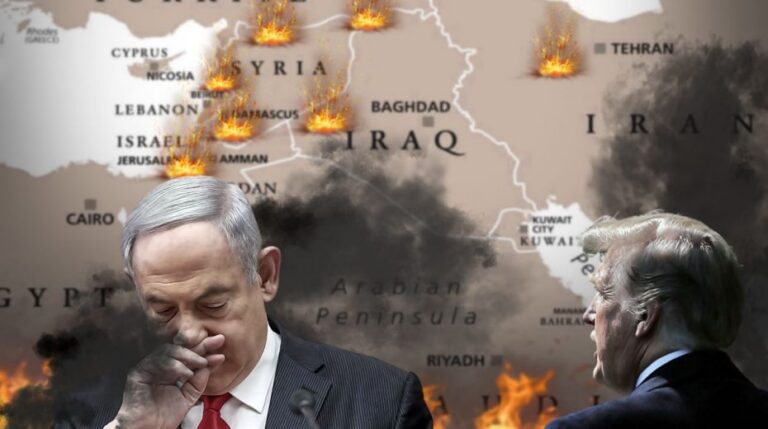
At the White House It’s Neocons First
Twenty-five years ago, a new Republican president who had promised a more modest and less arrogant approach to foreign policy was assembling his Cabinet and national security team. By the time this process concluded, even critics of the president acknowledged the caliber of his appointments.
The newly appointed Secretary of State, Colin Powell, had previously led the Joint Chiefs of Staff and was so well-regarded that many encouraged him to pursue the presidency himself.
Donald Rumsfeld, chosen as Secretary of Defense, brought experience as a congressman, ambassador, chief of staff, and former defense secretary.
The young, purportedly brilliant national security adviser, Condi Rice, had served as the chief Soviet expert on the National Security Council under George HW Bush and had been appointed provost of Stanford University at the age of 39.
Yet.
Within just three years, despite the team’s extensive expertise, the United States was drawn into unnecessary and catastrophic conflicts that resulted in nearly a million deaths and catalyzed the emergence of groups like ISIS.
This illustrates that expertise does not always guarantee success.
Currently, many journalists and foreign policy commentators criticize the inexperience of Trump’s national security team.
However, from the perspective of those concerned with international peace and stability, especially regarding the risks of escalation in Ukraine and the Middle East, the real source of worry lies elsewhere—not in the team’s lack of experience.
***
This conversation must be framed within the broader Washington debate on US foreign policy, and then specifically related to Trump’s team.
The three main schools shaping American foreign policy are neoconservatism, liberal interventionism, and realism.
Neoconservatives generally believe military power and its threat resolve nearly all issues. Russell Kirk, a conservative thinker, famously remarked that neocons “mistook Tel Aviv for the capital of the United States,” which succinctly captures their mindset.
Liberal interventionists largely staffed the Clinton, Obama, and Biden administrations. Their policies often closely resemble those of neocons, with the primary distinction being their nominal support for multilateral organizations like the UN and framing their militarism in humanitarian language.
Both neoconservatives and liberal interventionists embody what Charles de Gaulle, the foremost European statesman of the 20th century, described as “the American Messianic impulse which swelled the American spirit and oriented it toward vast undertakings.” De Gaulle saw America’s “taste for interventions in which the instinct for domination cloaked itself.”
These tendencies starkly contrast with the third American foreign policy approach, realism. The key difference between realism and the other two schools lies in the realist focus on distinguishing vital interests from peripheral ones.
Realists generally oppose wars of choice, considering them ineffective and immoral, while emphasizing the necessity of stable power balances in a multipolar global order.
Many assume Donald Trump’s America First aligns with realism. It is also mistakenly believed that “America First” is merely a modern revival of the 1930s US isolationist stance.
I contest these views: Considering who populates Trump’s national security team, America First appears more like a facade—utilizing realist-sounding language as a disguise to promote neoconservative agendas. Put simply, it’s America First donned in realist apparel.
This results in concerning overlap with Biden administration policies—in Ukraine, Israel, Asia, and Africa alike.
Regarding the Ukraine conflict, Trump’s so-called “plan,” or rather his hope that he alone could broker peace, quickly fell apart. This should not come as a surprise, especially when recalling 1968, when Richard Nixon claimed to hold a secret strategy to end the Vietnam War but instead escalated the conflict, wrongly expecting that to force North Vietnamese negotiations.
Trump appears to be attempting something comparable by announcing US intelligence sharing with Kiev to support long-range strikes inside Russia. Remember, during his first term—despite claims of cooperation with Putin—he supplied Javelin anti-tank missiles to Ukraine, imposed multiple sanctions on Russia, expelled numerous Russian diplomats, and appointed the hardline neocon Kurt Volker as Ukraine Envoy. His second term saw Volker replaced by Keith Kellogg. Can you spot the difference? I cannot.
***
As de Gaulle observed, “Deliberation is the function of many; action is the function of one.” Ultimately, the decision rests with Donald Trump on whether to let neoconservatives pull him—and the nation—into conflicts with Venezuela, Russia, and Iran.
Whether he chooses to follow that path remains uncertain.
Original article: therealistreview.substack.com




